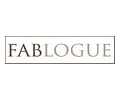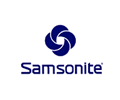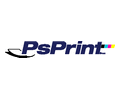Getty Images has long been famous for being a major provider of stock photo images. Clients range from newspapers and magazines to businesses and individuals seeking images that could be used for news or for general print placement. With the explosion of opportunity on the Internet once broadband connections became commonplace, Getty has now reshaped its business line to take advantage of digital file delivery. This has allowed the company to venture into other licensed-digital features once technologically unavailable a decade ago.
Setting the standard on royalty-free image use on the Internet, Getty has since broadened its services and library offerings. Today it is quite common to see a Getty library image appear on a blog, news website, video, or even in traditional print form in books and magazines. Because image products can be perused and downloaded quickly, the approach Getty designed for delivery has essentially been copied by other similar businesses trying to work in the same kind of market. In short, Getty turned the image industry upside down with its Internet platform delivery model.
The company works on an international level, sourcing images and digital files from big and small providers. This allows Getty the ability to operate a library that can find a rugby field image from Twickenham, England, a video of a blurred image of a Vespa scooter driving through Rome, Italy, or frozen time shot of an ice cream vendor in downtown Manhattan, New York. Users can find these images and more, scrolling through 22 million plus images from around the world and available for sale.
Getty's image library is extensive. This includes both photo imagery as well as graphic illustration products. Each item is tagged with specific licensing use, depending how Getty sells access. Images include general topic-related files as well as immediate news-related imagery for use by news outlets, covering a variety of news categories such as sports, entertainment, and politics. In addition, as Getty's library grows, it builds an extensive inventory of vintage imagery as well. This provides users the ability to go back in time and catch an actual image from a specific history period rather than making something up.
As new aspects to Getty's product library, the company is now expanding to product offerings that take advantage of the Internet's high speed and social media. Both videos and music files can now be licensed and accessed electronically, rather than waiting for pre-packed materials by regular mail. Each of the products are provided as professional grade materials, ranging from up-to-date videos and music to archival files offering time machine opportunities to creative communicators.
Following the traditional approach to image distribution, when a user accesses a Getty product, he is licensing its use. This allows Getty to resell the product to others. However, the user retains permission of use, so he doesn't have to worry about copyright infringement claims. Getty continues this model through its Internet platform via electronic agreements when files are purchased by users. Licensing becomes electronic and Getty continues to generate significant revenue as a result.
 4
5
12
4
5
12
 4
5
12
4
5
12












